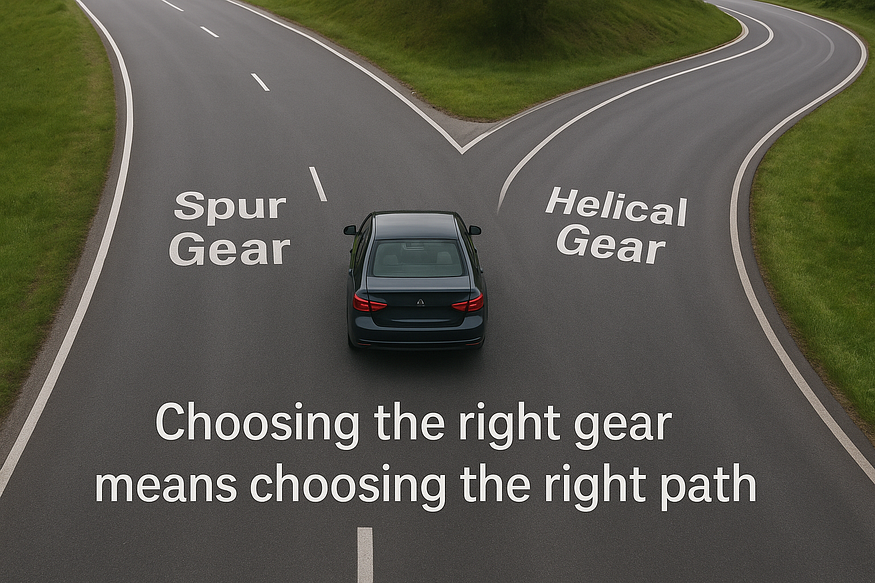Spur vs Helical Gears: Which is Best for Automotive Applications?
Gadi chalti hai engine se, par rukti hai gear pe
Confused between spur and helical gears? This article will explains the differences, advantages, and real-world examples from the automotive world helping gear manufacturers, engineers, and SMEs choose the right fit for performance and efficiency.
In the world of automobiles, gears are like the unsung heroes small components that quietly power the motion of entire vehicles. Without the right gear, even the most powerful engine won’t deliver smooth performance.
Among the most common gear types are spur gears and helical gears. Both have their place, but when it comes to automotive applications, which one should you choose?

“Sahi cheez sahi jagah pe ho toh hi kaam banta hai.” (The right thing in the right place makes all the difference.)
What Are Spur Gears?
Spur gears are the simplest type of gear with straight teeth cut parallel to the shaft.
- Advantages:
- Easy to design and manufacture
- Cost-effective
- Highly efficient at transmitting power
- Limitations:
- Noisy at high speeds
- Less durable under heavy load
Ex: Imagine an entry-level hatchback car where cost-efficiency is crucial. Spur gears are commonly found in simple gear trains of such vehicles.
What Are Helical Gears?
Helical gears have angled teeth, creating smoother and quieter operation.
- Advantages:
- Reduced noise and vibration
- Can handle higher loads and speeds
- Longer life due to better tooth engagement
- Limitations:
- More expensive to produce
- Higher axial thrust, requiring bearings
Ex: A luxury sedan or sports car where performance and silence matter most will often use helical gears in its transmission.
Key Differences: Spur vs Helical Gears
Spur Gear — Straight teeth, Noisy at high speed, Moderate, Affordable, Economy cars, trucks
Helical Gear — Angled teeth, Quiet and smooth, High, Expensive, High-end cars, industries
Which One Works Best in Automotive Applications?
- Spur gears are perfect for cost-effective, low-speed automotive systems.
- Helical gears shine in high-performance, smooth-driving vehicles.
The choice depends on what the vehicle prioritizes: affordability and efficiency (spur) or comfort and performance (helical).
As one auto engineer once said, “A car without the right gears is like a tabla without the right rhythm awaz toh niklegi, par sur nahi milega.”
Both spur and helical gears have their strengths. The automotive world continues to use both depending on context.
If you are an SME manufacturer or buyer, the real question is: What matters more to your customers cost or performance?
If you’re exploring ways to source or supply gears for automotive or industrial use , don’t just settle for generic answers. Start a conversation with industry experts, compare real applications, and see what fits your business best.
After all, ek chhota sa gear hi toh ek badi gaadi ko chalata hai.
.png)

Comments
Post a Comment